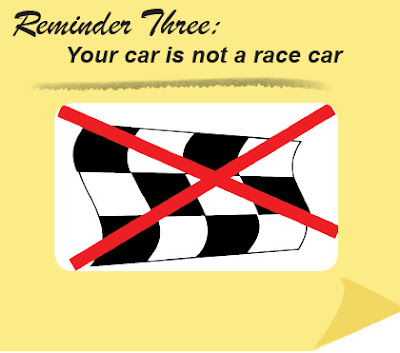By Keith Lindemann
Can you remember the last time you had the experience of standing on the highway while passing vehicles fly by? Chances are, you were pretty nervous while you were changing that flat tire or adding that gallon or two of gas. The sound of tires on the pavement just inches away and the rush of air created by the passing vehicles are warning signs of how dangerous it is out there. These warning signs should motivate you to finish the job before the unthinkable happens. The unthinkable is - being struck and killed by a passing motorist.
I experience these feelings most every shift while working the streets, roads and highways as Captain on Rescue-1. Rescue-1 responds with law enforcement and EMS to all injury accidents in Salina, and in Saline County. Once on the scene of an accident, my responsibilities include traffic control and performing extrication techniques to free trapped occupants. Believe me - traffic control is often times more challenging than the extrications themselves. Directing all oncoming traffic safely around the emergency scene can be challenging, mainly because of inattentive drivers.
Did you know that if changing your flat tire takes 30 minutes, up to 300 vehicles might pass by during that time? How many of those 300 drivers are drunk, drugged, drowsy, texting or distracted by something else in their vehicles? These human factors, along with ice, rain, snow, curves and hills, are the leading causes of secondary collisions.
Despite attending and instructing classes in Traffic Incident Management and setting up the perfect traffic control zone, I have been conditioned to never really be comfortable while working in traffic. Most responders don’t trust the traffic because of close calls they have experienced at one time or another during their careers. On average, 12 law enforcement officers, 5 firefighters, and 60 tow operators are killed each year due to distracted drivers crashing into emergency scenes.
Why am I writing this blog? Why am I so passionate about the subject? My passion is fueled because of personally experiencing several close calls (some within inches) and by witnessing a few actual secondary crashes during my 30 years with the Salina Fire Department (26 assigned to Rescue-1). Thankfully I am alive to write about them.
In 2011, a distracted driver ran into one of our scenes on I-135 and struck a Salina PD officer who was assisting with traffic control (see photo above). I witnessed this secondary crash while standing in the median about 100 feet away. I will never forget the emotions I felt while running toward the patrol car to check on the condition of the officer and distracted driver. The crash resulted in 2 additional patients, and yet more traffic control problems. Thankfully both the officer, who was seated in his vehicle, and the distracted driver were treated and released from our local hospital.
 |
| Lindemann during rope rescue training |
We’ve all heard the message “Move Over and Slow Down.” The public needs to know that “Move Over and Slow Down” is a state law in Kansas and not just a suggestion. Vehicles traveling at highway speeds crashing into vehicles that are stopped are always more severe than the original crash and often times result in fatalities. I can say that when my crew and I are working an incident, the drivers that actually move over and actually slow down absolutely make the scene safer for everyone, including themselves.
In closing, my recommendation for motorists would be to always be aware of conditions ahead, watch for emergency lights in the distance, obey warning signs and traffic cones, and move over and slow down for responders. For those of you already practicing these recommendations, thank you! It really is a game of inches.
Keith Lindemann is the Fire/Rescue Captain at the Salina Fire Department






































